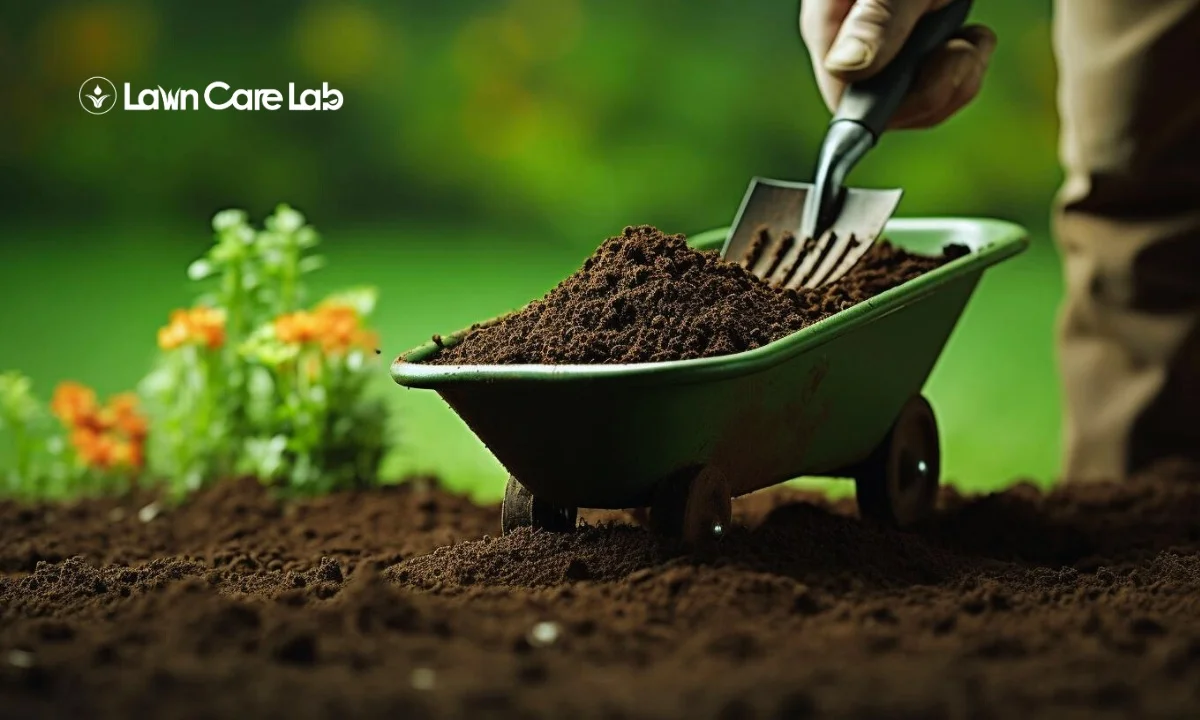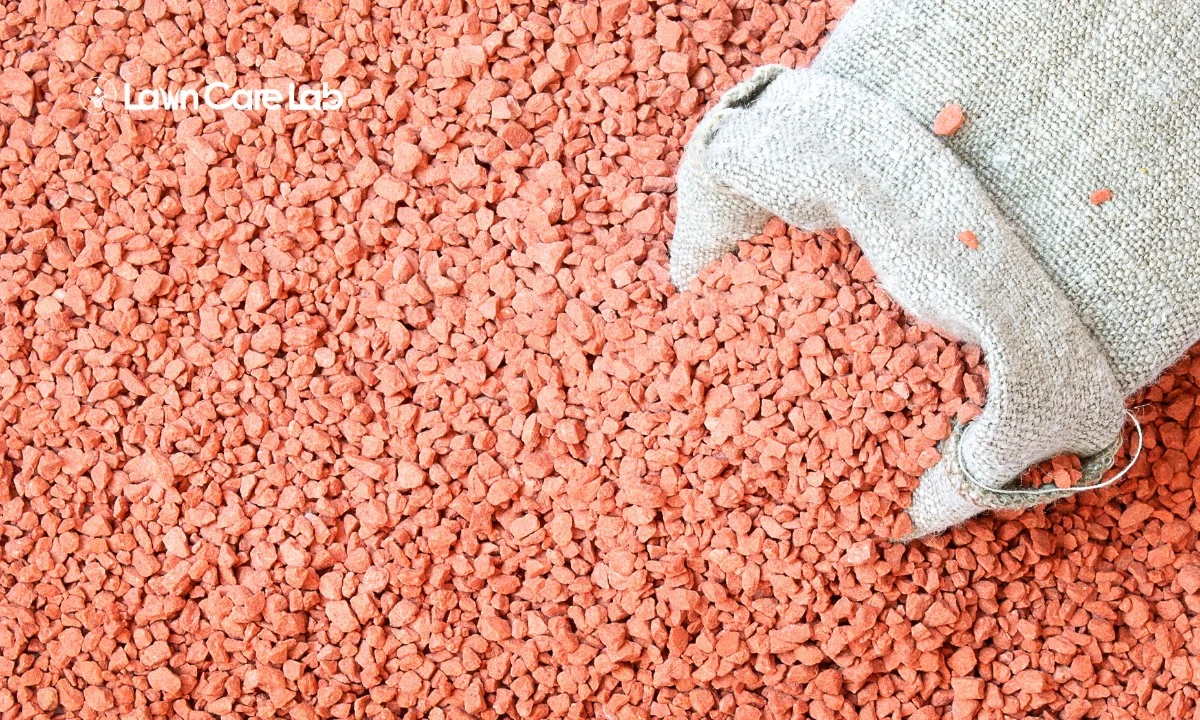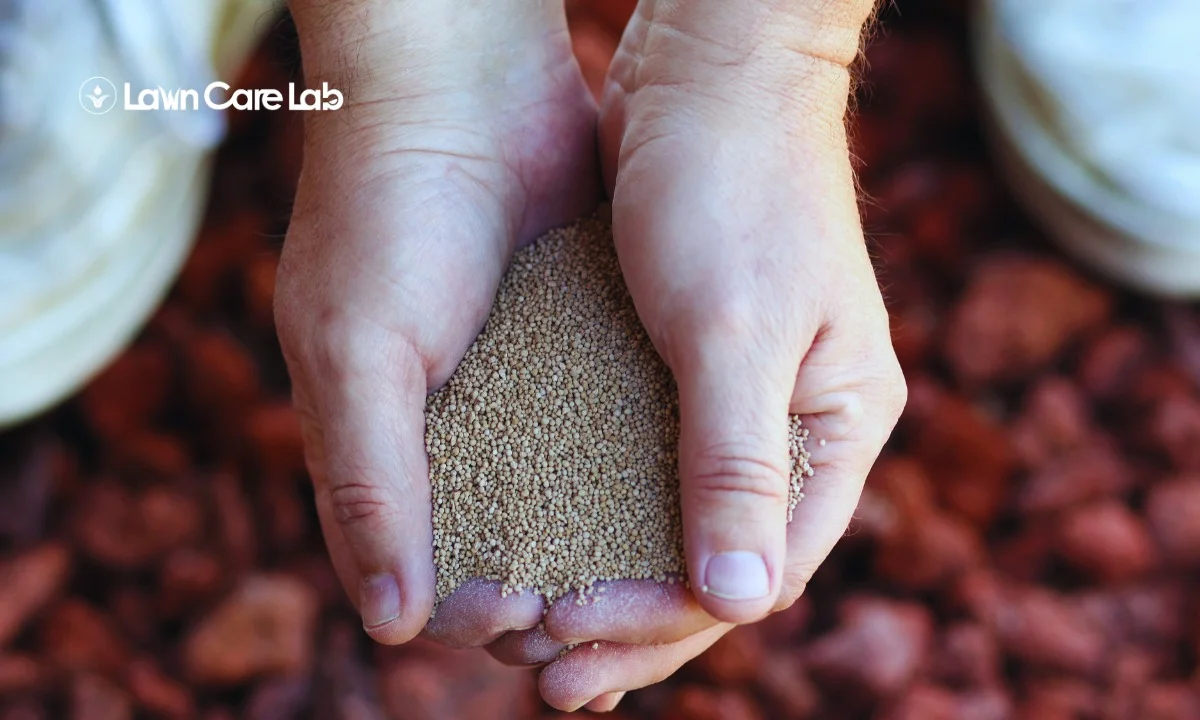A lush lawn is a common desire among homeowners. However, nutrient imbalance in the soil can pose challenges. Don’t worry, it’s solvable.
The aim of this article is to equip you with the knowledge to identify, rectify, and prevent nutrient imbalances in your lawn’s soil. A well-nourished lawn contributes to its aesthetic appeal and supports a sustainable ecosystem in your backyard.
Let’s set the course for creating the lush lawn you’ve always wished to own.
Table of Contents
Recognizing Nutrient Imbalance in Lawns
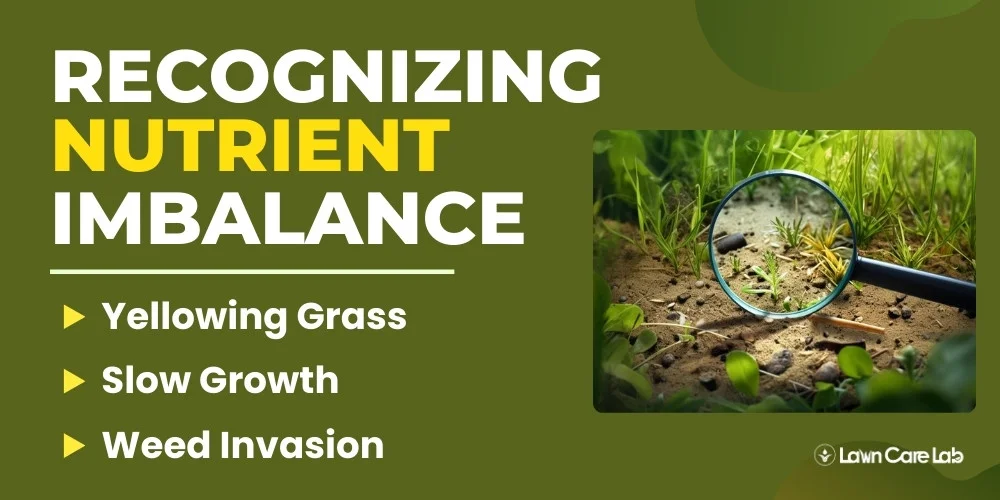
Yellow grass, sluggish growth, and weed invasion indicate a nutrient imbalance in your soil, causing harm to your lawn. Identifying the issue accurately is crucial to restoring your lawn’s health and lushness.
Yellowing Grass
Yellowing grass indicates a nitrogen deficiency. Nitrogen is essential for photosynthesis to give the grass its green color. Not addressing this nutrient imbalance can seriously impact the health of your lawn.
Slow Growth
Slow lawn growth could signal a nutrient imbalance that weakens its health. This can cause sporadic patches and thin areas, detracting from the lawn’s aesthetic appeal.
Addressing this issue in a timely manner can recalibrate the nutrient balance, leading to a lush and vibrant lawn.
Weed Invasion
Weeds can invade your lawn if the soil’s nutrient balance is off-kilter. Catching this early is crucial to preserve the health of your lawn. Neglecting this may lead to an uncontrollable weed infestation.
In the following sections, we’ll discuss the root causes of nutrient imbalances in lawn soil.
Causes of Nutrient Imbalance in Lawn Soil
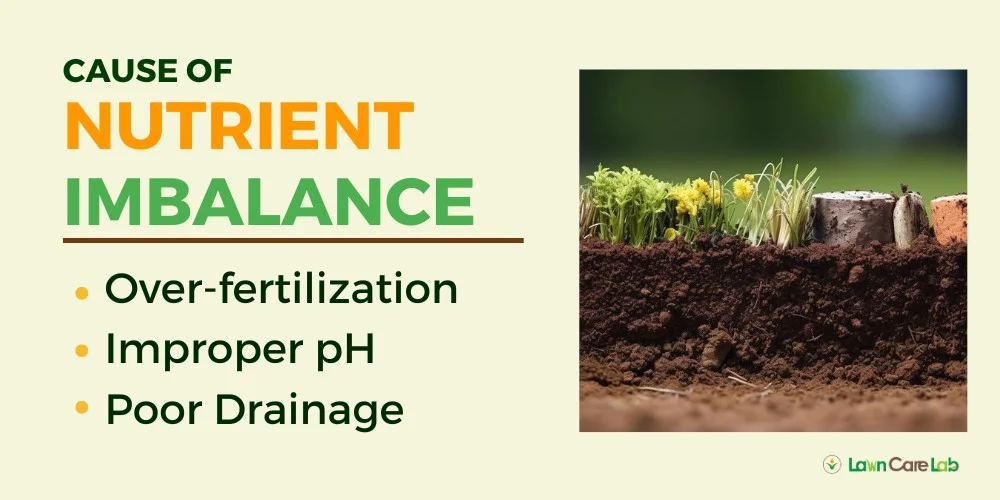
Over-fertilizing, incorrect pH levels, and poor drainage can harm your lawn’s health by causing nutrient imbalances in the soil.
Over-fertilization
Too much fertilizer can create a nutrient imbalance that harms your lawn. Excess nitrogen can promote leaf growth but hurt root development.
| Overabundant Nutrient | Resulting Effect | |
|---|---|---|
| 1 | Nitrogen | Boosts leaf growth, inhibiting root development |
| 2 | Phosphorus | Hampers the absorption of iron and zinc |
Using fertilizers responsibly is important to maintain a healthy lawn and protect the environment. Over-fertilizing can harm your lawn and the surrounding ecosystem.
Improper pH
Soil pH imbalance affects your lawn’s nutrient absorption, leading to poor growth. The ideal range is 5.5 to 6.5. Conduct a soil test to check pH levels. Lime raises pH for acidic soil while sulfur lowers it for alkaline soil.
Balanced pH levels enhance nutrient absorption for a healthy lawn. Handle substances with care and prioritize safety.
Poor Drainage
Poor drainage can harm your lawn care. It can create imbalances in soil nutrients, wash away mobile nutrients, and starve roots of oxygen.
Let’s examine the specific ways in which poor drainage disrupts your lawn:
- It washes away essential nutrients like nitrogen and potassium
- It starves roots of oxygen, which is vital for nutrient absorption
- It can lead to waterlogged conditions, creating a breeding ground for root rot
- It makes your lawn more prone to diseases
- It negatively affects the overall health and aesthetics of your lawn
Proper soil drainage is vital for a healthy lawn. Monitor it to maintain your lawn’s nutrient balance and vibrancy.
Testing Lawn Soil for Nutrient Imbalance
You can test your lawn’s soil nutrient levels with a DIY kit or by hiring a professional.
DIY testing is quick and cheap but less accurate. Professional testing is more precise and comprehensive but costs more.
Both methods are valid, so the choice depends on your preferences and needs.
DIY Testing
Home soil test DIY kits can help identify nutrient deficiencies and suggest necessary improvements for a flourishing garden.
Here’s an easy-to-follow guide to facilitate your DIY soil testing endeavor:
- Invest in a trustworthy home test kit.
- Accumulate soil samples from different areas of your garden.
- Adhere to the kit’s instructions to ensure precise outcomes.
- Evaluate the findings for pH and macronutrient content.
- Strategize soil improvements based on the test findings.
Handling soil and testing chemicals require caution and meticulousness for a successful nutrient-rich garden.
Professional Testing
Professional soil examination provides accurate nutrient readings for your lawn, helping you to create a customized nutrient correction strategy. It also ensures safety by minimizing the risk of introducing harmful products to your lawn and keeping your family and pets safe.
Correcting Nutrient Imbalance in Lawn Soil
Getting a soil test is crucial to identify any specific nutrient deficiencies. Use the lab results to target fertilizers that address those shortfalls efficiently rather than fertilizing by guesswork. Soil testing provides key insights into your lawn’s unique nutrient needs for optimal health, enabling you to efficiently customize care to rectify imbalances.
Overall, laboratory analysis of your soil gives you the window you need to address deficits and promote optimal lawn nutrition.
Balancing Soil pH
Balancing soil pH corrects nutrient deficiencies. Lab analysis identifies missing nutrients. Lime or sulfur fine-tunes soil pH. A healthy lawn requires understanding soil needs.
Lime for Acidity
Lime can neutralize soil acidity and release nutrients for a healthy lawn.
- Neutralizes harmful acidity, creating a safer environment for your lawn
- Frees up phosphorus, leading to healthier, more vibrant grass
- Activates potassium, a critical nutrient for plant health
- Supplies magnesium, an essential element for photosynthesis
- Imparts calcium, strengthening plant cells and promoting growth
Add lime to your lawn care routine. It mitigates soil acidity and provides nutrients for grass to flourish.
Sulfur for Alkalinity
Lime can shift your lawn’s pH balance towards alkalinity, hindering nutrient absorption. Sulfur is a natural pH reducer that can make nutrients accessible again.
Conducting a lab analysis can help you obtain precise measurements and balance your lawn.
Proper Fertilization
To fertilize your lawn properly, use controlled-release fertilizer that’s formulated for your grass species. Apply during periods of active growth and address any deficiencies revealed by lab testing.
Follow the safety guidelines listed on the packaging. These measures are critical to meet your lawn’s nutritional needs and promote optimal health and growth.
Improving Drainage
A proper drainage system is crucial to prevent excessive irrigation or rainfall nutrient loss. Incorporating organic matter and aerating the soil can help with water distribution and drainage.
A dedicated drainage system can also be installed to maintain the ideal nutrient balance. Proper drainage and fertilization ensure a healthier lawn.
Maintaining Balanced Lawn Nutrients
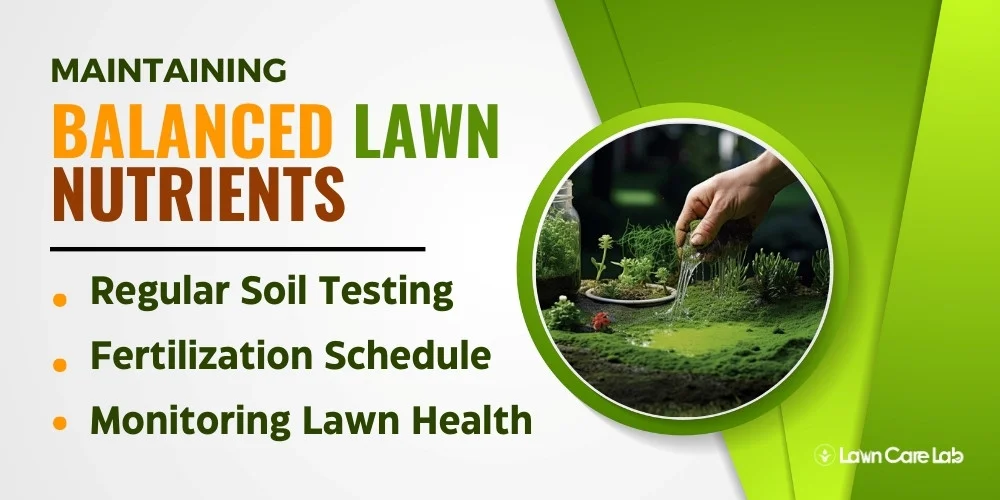
Preserving the nutrient balance of your lawn is a vital part of your gardening routine. Periodic soil tests are instrumental as they offer an in-depth perspective on the nutrient content of your soil and the elements it may be missing.
Sticking to a proper fertilizing schedule and keeping a close eye on the health of your lawn are also integral steps to take.
Regular Soil Testing
Regular soil analysis is crucial for maintaining a nutrient balance and promoting lawn health. Test at least once per season using a reliable method and monitor for changes in soil composition.
Address any nutrient deficiencies or imbalances promptly to prevent further lawn damage. A proper fertilization schedule is also important.
Fertilization Schedule
Maintaining a healthy lawn requires consistent fertilization timed to the high-growth phases of your grass. Balancing nutrient supply is key to preventing nutrient deficit or surplus.
Be cautious not to overuse fertilizer to avoid nutrient runoff and protect the environment. It’s important to prioritize safety by wearing protective gear and storing fertilizers according to the manufacturer’s guidelines.
Monitoring Lawn Health
To keep your lawn healthy, monitoring its nutrient balance is crucial. What are the signs of nutrient imbalances?
- Grass turning yellow: This could be a signal of nitrogen shortage.
- Stunted growth: This might be a sign your lawn is phosphorous-deficient.
- Feeble or thin patches: This could suggest a potassium deficiency.
- Leaves taking on a purple hue: This is often a sign of phosphorus shortage.
- Grass growing spindly: This might be because of low iron levels.
A healthy lawn requires early issue identification and nutrient level balance to resist pests and diseases. Remember, a healthy lawn is crucial, not just for aesthetics.
Conclusion
Detecting nutrient deficiency signs and performing soil tests are crucial for a healthy lawn. Analyzing laboratory findings provides accurate information on nutrient insufficiencies, enabling you to identify the causes and develop an effective solution.
Lawn nutrients promote a thriving ecosystem. Consistent learning and effective care yield a lush lawn.
- Special Considerations and Techniques for Maintaining Sloped Lawns - July 15, 2024
- How Green Spaces Influence Community Interactions - July 8, 2024
- Lawn Fungal Diseases: Identification and Treatment - July 3, 2024

